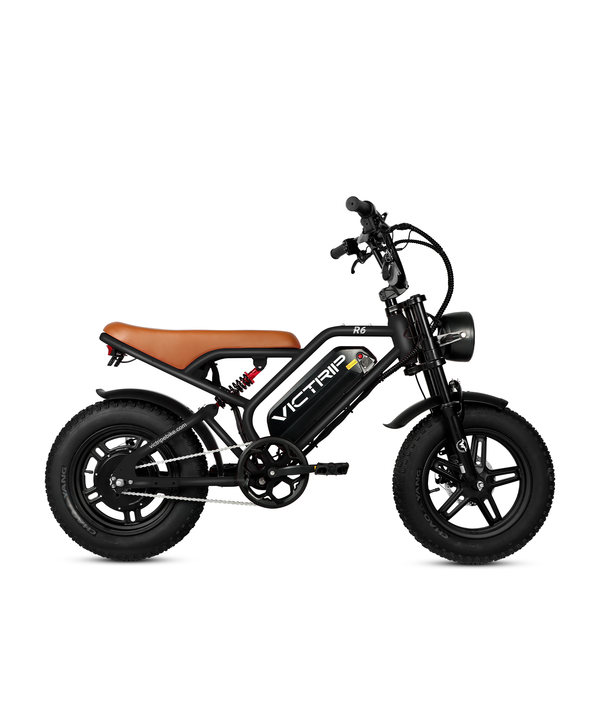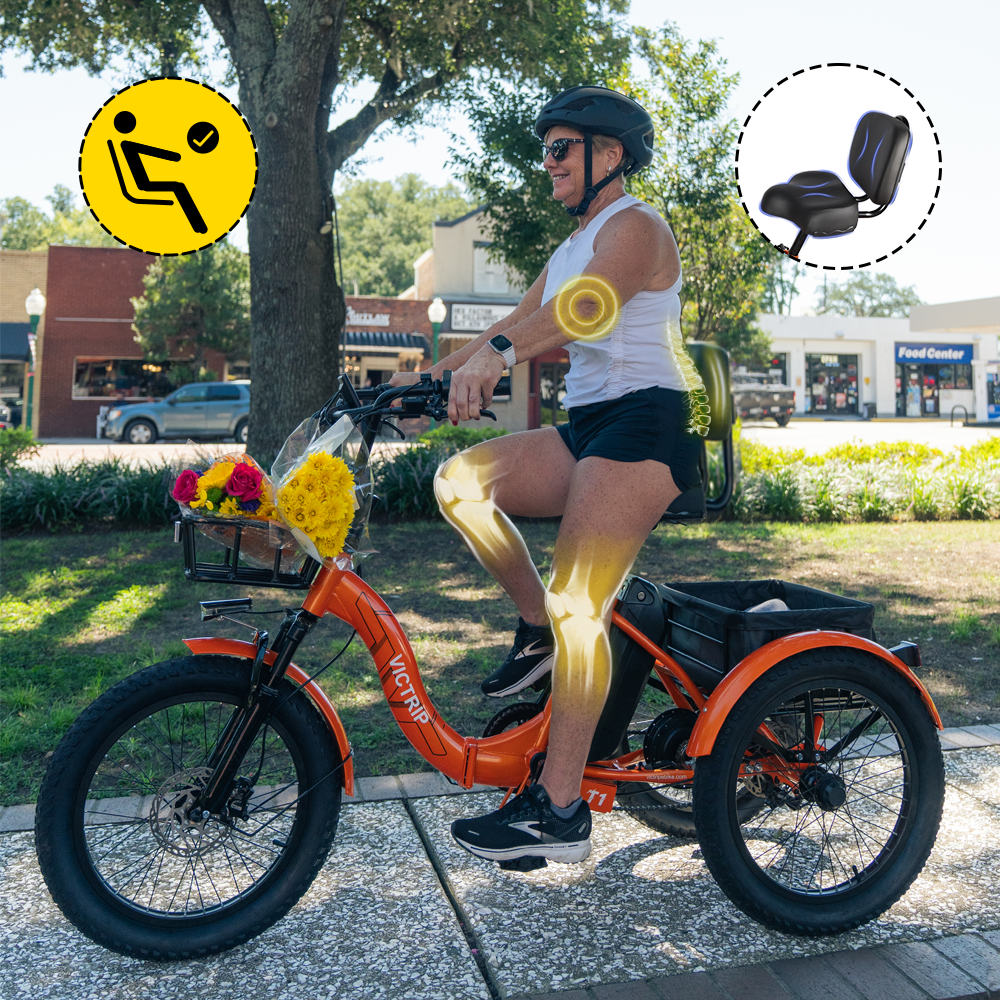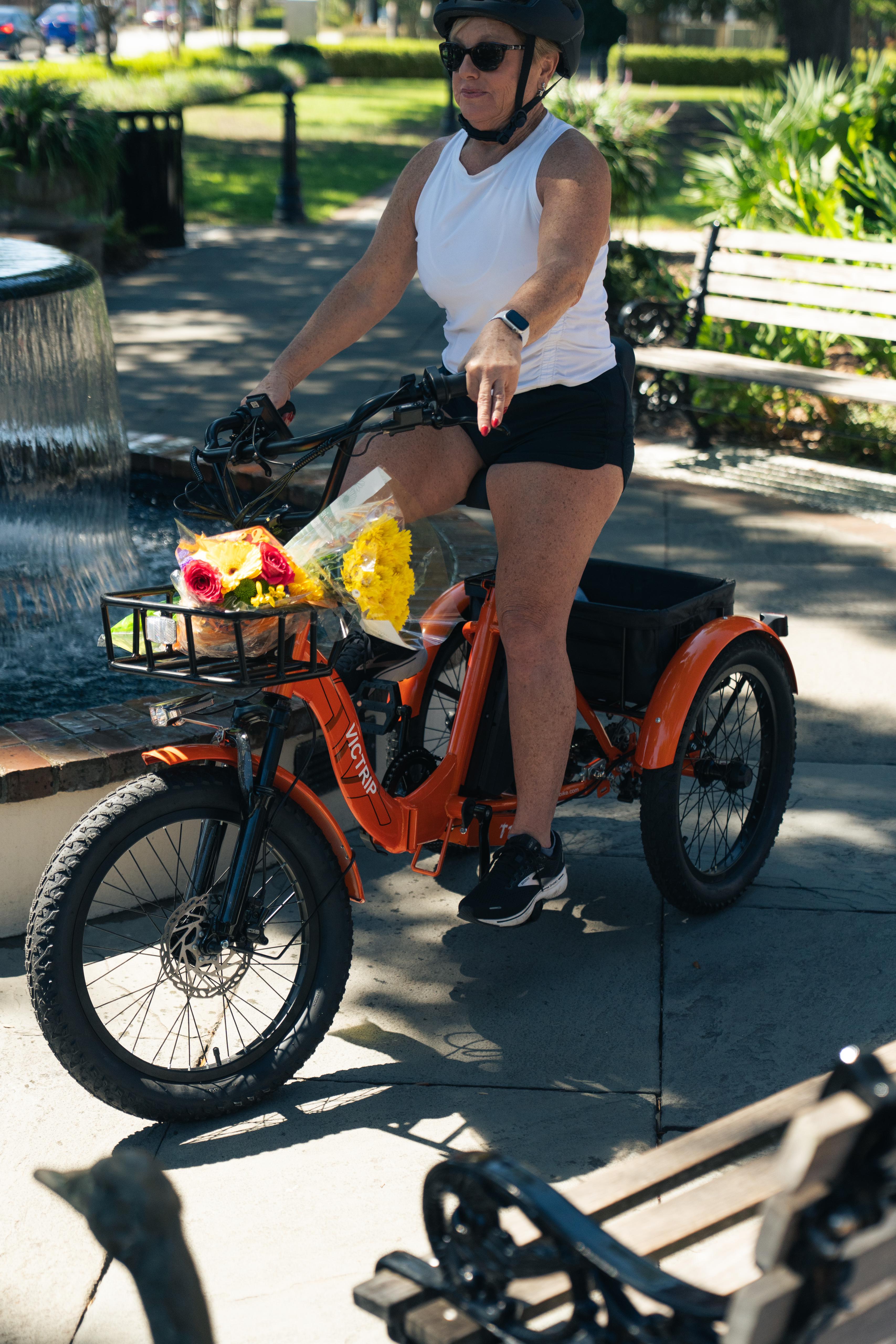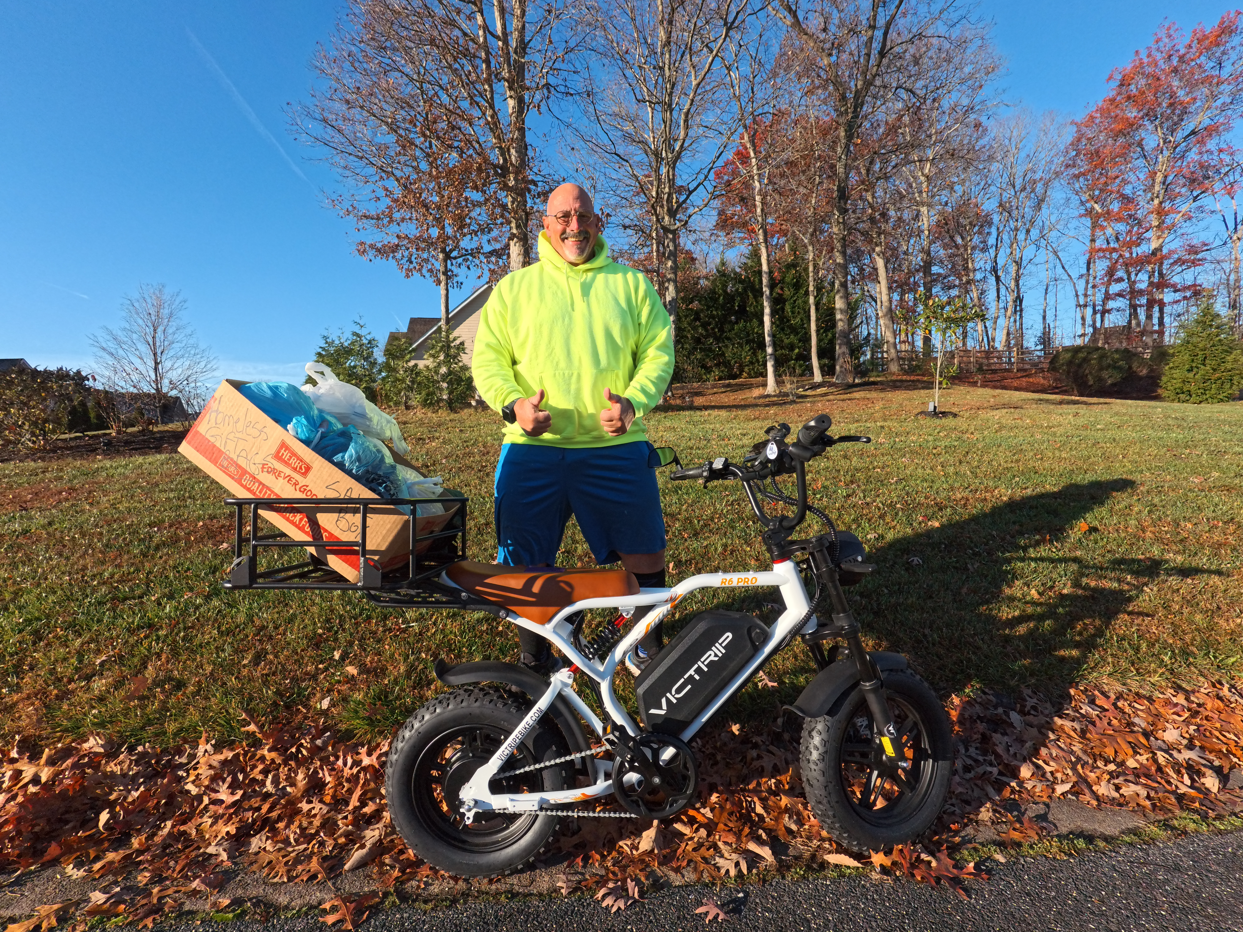
Gearing changes how an eBike feels, how hard the motor works, and how far you'll go on a charge. While the motor supplies power, gears let that power be used efficiently across different speeds and slopes. So whether you should pick a single speed or a multi speed eBike isn't just about simplicity or complexity — it's about matching drivetrain design to your terrain, riding style, fitness, and range goals.
This article breaks down the differences, pros and cons, real-world impacts on motor performance and battery life, and how to choose the right setup for you.
What is a Single Speed eBike?
Definition & basic mechanics
A single speed eBike has one gear ratio between crank and wheel — no derailleur, no cassette with multiple sprockets, just a single front chainring and a single rear sprocket or a single-speed hub. Power from the rider and motor goes through that one ratio to the wheel. Many single speed eBikes pair a geared or direct-drive hub motor, or a mid-drive with a simplified drivetrain.
Motor pairing and performance
Single speed setups are simplest when paired with hub motors, because the motor torque directly rotates the wheel without extra drivetrain complexity. That said, mid-drive motors are sometimes used with single speed setups; they add torque at the cranks, but the lack of gears limits the motor’s ability to “gear down” for steep climbs.
Common use cases for single speed eBikes
-
Flat urban commuting where stops/starts are frequent.
-
Simpler maintenance needs (no derailleurs to adjust).
-
Lightweight / minimal eBikes and some folding eBikes.
-
Riders who prefer a “one-gear” feel and low upkeep.
A rugged example of a single-speed approach is the VICTRIP R6 Off Road eBike, which uses a single-speed flywheel setup paired with a 750W hub motor, fat tires, and full suspension—ideal for off-road and urban rough-terrain riding.
TOP PICK

VICTRIP®R6 Off Road Ebike
What is a Multi Speed eBike?
Definition & gear systems overview
A multi speed eBike has several gear ratios, usually provided by a derailleur + cassette (commonly 7-speed, 9-speed, 10-speed, or 12-speed setups) or by an internal gear hub (IGH) with options like 3-speed, 7-speed, or 11-speed. These gears let you change mechanical advantage, making it easier to pedal at different speeds and gradients. Whether using a traditional derailleur or an enclosed IGH, the extra ratios give both rider and motor the flexibility to perform well in varied conditions.
Motor integration with multi-speed drivetrains
Multi-speed drivetrains pair naturally with mid-drive motors, which magnify the benefit of gears: the motor drives the crank, and the drivetrain multiplies torque to the wheel. That means you can keep motor RPMs in an efficient band while using the mechanical gears to conquer steep hills or cruise at high speed.
Common use cases for multi-speed eBikes
-
Hilly routes or variable terrain.
-
Long-distance rides where efficiency matters.
-
Cargo or touring eBikes carrying heavy loads.
-
Riders who want maximum versatility and performance.
A good contrast can be drawn with models like the VICTRIP Surnat N12 2000W electric bike, which uses a Shimano 7-speed rear derailleur to make the most of its dual-motor setup.
TOP PICK

VICTRIP®SURNAT N12 2000W Electric Bike
Single Speed vs Multi Speed – Head-to-Head Comparison
Speed and acceleration
-
Single speed: Simpler acceleration profile — you either have sufficient cadence/torque or you don’t. Off-the-line acceleration can feel strong with a powerful hub motor, but once that single gear’s limit is reached you can’t “shift up” for higher cruise speeds.
-
Multi speed: You can accelerate in lower gears and shift up to maintain cadence at higher speeds. This produces smoother acceleration and better top-end speed potential with less motor strain.
Hill climbing ability
-
Single speed: Limited. On steep grades you rely entirely on the motor’s torque and your cadence. If the gear chosen is too tall, climbs can cause wheel-spin or heavy motor load.
-
Multi speed: Superior. Lower gears let both rider and motor stay in an efficient, high-torque range for climbing.

Maintenance requirements
-
Single speed: Minimal. No derailleur adjustments, fewer components to wear or break.
-
Multi speed: More upkeep — chain wear, derailleur alignment, cassette replacement, occasional indexing adjustments. Internal gear hubs cut down on exposed maintenance but still require service.
Battery efficiency
-
Single speed: Can be less efficient on varied terrain because the motor can be forced to operate outside its most efficient RPM/torque range.
-
Multi speed: Generally more efficient because gears allow the motor to operate closer to its optimal band, which saves watts and extends range — especially on hilly or mixed routes.
Cost and availability
-
Single speed: Often cheaper due to simpler parts.
-
Multi speed: More expensive components and integration with mid-drive motors can raise the cost.
Pros & Cons of Single Speed eBikes
Pros
-
Low maintenance and fewer parts to fail.
-
Lighter weight drivetrain.
-
Clean, uncluttered look and operation.
-
Great for flat commutes and short urban rides.
Cons
-
Poor performance on sustained climbs.
-
Lower top speed efficiency on long flats unless gear is optimized.
-
Limited load-carrying flexibility — heavy riders or cargo can overwhelm a single gear choice.
Pros & Cons of Multi Speed eBikes
Pros
-
Excellent hill-climbing and cadence management.
-
Better battery economy across varied terrain.
-
Versatile — works for touring, cargo, and sport riding.
-
Keeps motor in efficient RPM/torque band (especially with mid-drive motors).
Cons
-
Higher maintenance complexity and cost.
-
Slightly heavier drivetrain.
-
More components that can need repair after heavy use.
How gearing impacts motor efficiency and battery range
Gears let the motor run at an RPM where it produces good torque for relatively low current draw. Without gears, the motor may have to produce high torque at inefficient RPMs, which increases current draw and heat — both of which reduce battery range and can stress motor electronics.
Put simply:
-
Using the right gear reduces the current the motor needs to deliver, extending range.
-
Shifting down before a climb helps the motor and battery; shifting up on flats reduces rpm-driven energy losses.
This is why mid-drive motors (which leverage the bike’s gearing) are often preferred for range-conscious eBikers riding mixed terrain.
Read More: Hub Drive vs Mid Drive: Which eBike Motor Is Better?
Terrain & riding style — Which one fits you best?
Flat urban roads
-
Best: Single speed or simple hub-gear eBikes.
-
Why: Few climbs, frequent stops — simplicity and low maintenance win.
Hilly terrain
-
Best: Multi speed (derailleur or internal gear hub) with a mid-drive motor.
-
Why: Lower gears preserve battery and keep motor temps down on climbs.
Mixed trails & touring
-
Best: Multi speed.
-
Why: Versatility in gearing helps with loaded rides and varied terrain.
Real-world example: Single vs Multi Speed on the same route
Imagine a 10-mile commute with a 600-foot climb in the middle and several flat sections. On a single speed eBike, you pick a compromise gear — either comfortable on the climb or efficient on the flats, rarely both. That can force the motor to draw high current on the climb, cutting range noticeably.
On a multi speed eBike, you shift down for the climb, letting the motor and legs produce torque efficiently, then shift up on the flats to reduce cadence and current draw. The result: less energy used overall and a cooler motor after the climb.
Which one should you choose? — Decision guide
Use the checklist below to pick:
- Terrain: Mostly flat → single speed. Hilly/mixed → multi speed.
- Range priority: High (long commutes/touring) → multi speed for efficiency.
- Maintenance tolerance: Low → single speed or internal gear hub.
- Load/cargo: Heavy loads or frequent carrying → multi speed.
- Budget: Tight → single speed; willing to invest → multi speed (particularly with mid-drive).
- Motor type: Hub motor + flat routes → single speed ok. Mid-drive + varied routes → multi speed recommended.
If you can’t decide, go multi speed — it offers versatility with few downsides, especially if you plan to ride varied terrain or carry loads.
Conclusion
There’s no one-size-fits-all answer. Single speed eBikes shine in simplicity, low maintenance, and predictable flat-route use. Multi speed eBikes win on hills, in mixed terrain, and for riders who want the best battery efficiency and climbing performance — especially when paired with a mid-drive motor.
If your rides are varied, hilly, loaded, or long, choose multi speed. If you want ultra-simple urban commuting and minimal upkeep, single speed could be perfect. Either way, match drivetrain choice to your terrain and how you actually ride — that’s the smartest gear decision you’ll make.
FAQs
Can I convert my single speed eBike to multi speed?
Sometimes — but it depends on frame clearance, wheel hub, and whether your motor type interferes with gearing. Converting often means replacing the rear wheel, adding a cassette, and fitting a derailleur or internal gear hub.
Do mid-drive motors require gears?
They benefit greatly from gears. Mid-drive motors use the bike’s gears to keep the motor in an efficient RPM range. While you can run them on single speed setups, you’ll lose much of their advantage.
Are internal gear hubs a good compromise?
Yes. Internal gear hubs (IGH) give multiple ratios with lower maintenance than derailleurs. They’re great for commuting and cargo eBikes, though they can be heavier and sometimes slightly less efficient in extreme gear ranges.
Will gears extend my eBike’s battery life?
Indirectly. Gears let the motor run in a more efficient manner, which reduces current draw and heat — that usually translates to longer range per charge.
Which is better for cargo eBikes — single speed or multi speed?
Multi speed. Cargo loads increase the demand on motor and rider; lower gears help maintain cadence and reduce strain.
Do single speed eBikes need belt drives?
Some single speed eBikes use belt drives for low maintenance. Belts are quiet and durable but require specific frames and can be less flexible for gearing changes.




Share:
The Electric Bike That Feels Like a Mini Motorcycle
Pedal Assist Electric Bike Health Benefits Backed by Science